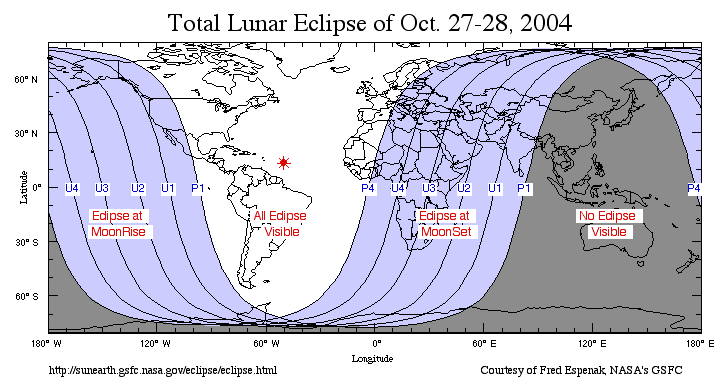Explanation: Go outside tonight and see the total lunar eclipse. Tonight's eclipse is easy and convenient for much of the world to see. Anyone who can spot a full Moon -- even during the day -- can see it fade out as the Earth's shadow engulfs it. No protective glasses or expensive telescopes are needed, just a little moxie. The above illustration shows how the eclipse will appear across the Earth. The total lunar eclipse starts at 9:14 pm Eastern Daylight Time, equivalent to 1:14 am UT in the morning for sky enthusiasts in the United Kingdom. From the moment the first part of the Moon disappears to the moment that the last part of the Moon reappears will be 3 hours and 40 minutes. For those unfortunate enough to suffer clouds, the eclipse can also be followed over several live webcasts.
1999 2000 2001 2002 2003 2004 2005 2006 2007 2008 2009 2010 2011 2012 2013 2014 2015 2016 2017 2018 2019 2020 2021 2022 2023 2024 2025 |
Yanvar' Fevral' Mart Aprel' Mai Iyun' Iyul' Avgust Sentyabr' Oktyabr' Noyabr' Dekabr' |
NASA Web Site Statements, Warnings, and Disclaimers
NASA Official: Jay Norris. Specific rights apply.
A service of: LHEA at NASA / GSFC
& Michigan Tech. U.
|
Publikacii s klyuchevymi slovami:
lunar eclipse - Sun - Moon - lunnoe zatmenie - Solnce - Luna
Publikacii so slovami: lunar eclipse - Sun - Moon - lunnoe zatmenie - Solnce - Luna | |
Sm. takzhe:
Vse publikacii na tu zhe temu >> | |
